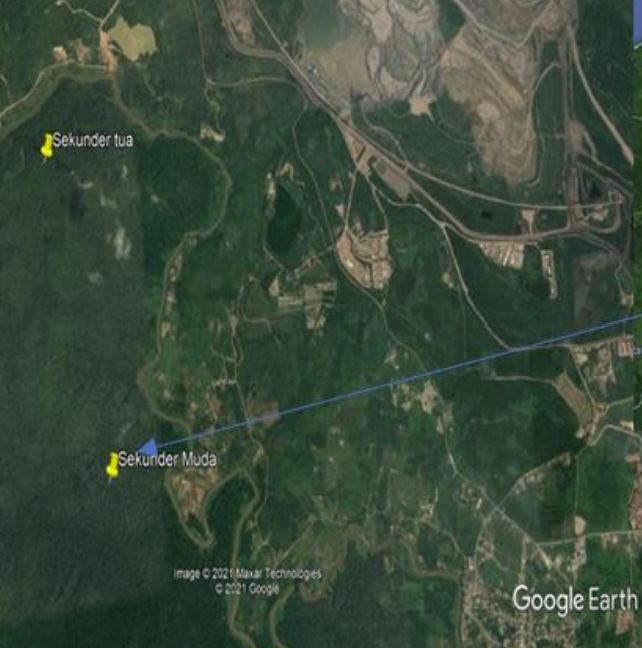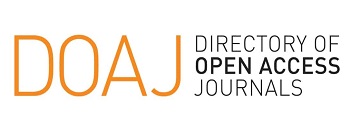Vegetation diversity, biomass, and carbon storage in post-burned lowland forest of Sangatta, East Kutai, East Kalimantan

Downloads
Downloads
Adinugroho, W. C., Prasetyo L. B., Kusmana, C., & Krisnawati, H. (2019). Contribution of forest degradation in Indonesia’s GHG emissions: Profile and opportunity to improve its estimation accuracy. ISenREM Conf. Series: Earth and Environmental Science 399, 1-8.
Badan Pusat Statistik. (2018). Sangatta Utara Dalam Angka. Badan Pusat Statistik Kabupaten Kutai Timur. Provinsi Kalimantan Timur.
Bader, C., Müller, M., Schulin, R. & Leifeld, J. (2018). Peat decomposability in managed organic soils in relation to land-use, organic matter composition and temperature. J. Biogeosciences, 15, 703–719.
Balai Penelitian Tanah. (2018). Peta Tanah Pulau Kalimantan, Kutai. Badan Penelitian dan Pengembangan Pertanian, Kementerian Pertanian. Bogor.
Bismark, M., Sawitri R., & Heriyanto, N.M. (2014). Implementasi dan evaluasi kriteria dan indikator efektivitas pengelolaan kawasan konservasi. Laporan Penelitian. Bogor: Pusat Penelitian Hutan.
Bismark, M., Iskandar, S., Sawitri, R., Heriyanto, N.M & Yulaeka. (2019). Habitat siamang (Symphalangus syndactylus, Raffles 1821) di kawasan terdegradasi Taman Nasional Kerinci Seblat, Kabupaten Pesisir Selatan Jurnal Penelitian Hutan dan Konservasi Alam, 16(2), 133-145.
Campbell, N.A., J.B. Reece & L.G. Mitchell. (2002). Biologi. Jilid I. Edisi kelima. Alih bahasa: Wasmen. Jakarta: Penerbit Erlangga.
Chave, J., Mechain, M.R., Burqueez, A., Chidumayo, E., Colgan, M.S., Delitti, W.B.C., Dugue, A., Eid, T., Fearnside, P.M., Goodman, R.C., Henry, M., Yrizar, A.M., Mugasha, W.A., Landau, H.C.M., Mencuccini, M., Nelson, B.W., Ngomanda, A., Noguiera, E.M., Malavessi, E.O., Pelissier, R., Ploton, P., Ryan, C.M., Soldarriaga, J.G and Vieilledent, G. (2014). Improved allometric models to estimate the aboveground biomass of tropical trees. Global Change Biology, 20(10), 3177-3190.
Dendang, B., & Handayani, W. (2015). Struktur dan komposisi tegakan hutan di Taman Nasional Gunung Gede Pangrango. Jurnal Prosemnas, 1(4), 691-695.
Dharmawan, I.W.S. & Samsoedin, I. (2012). Dinamika potensi biomassa karbon pada landskap hutan bekas tebangan di Hutan Penelitian Malinau. Jurnal Penelitian Sosial dan Ekonomi Kehutanan, 9(1), 12-20.
Dharmawan, I.W.S. (2012). Evaluasi dinamika cadangan karbon tetap pada hutan gambut primer dan bekas terbakar di Hampangen dan Kalampangan, Kalimantan Tengah. Desertasi. Sekolah Pasca Sarjana IPB, Bogor. Tidak diterbitkan.
Heriyanto, N.M., I. Samsoedin & K. Kartawinata. (2019a). Tree species diversity, structural characteristics and carbon stock in a one-hectare plot of the protection forest area in West Lampung Regency, Indonesia. Reinwardtia, 18(1),1-18.
Heriyanto, N. M., Samsoedin, I., & Bismark, M. (2019b). Keanekaragaman hayati flora dan fauna di Kawasan Hutan Bukit Datuk Dumai Provinsi Riau. Jurnal Sylva Lestari, 7(1), 82-94.
Heriyanto, N.M., Priatna, D., Kartawinata, K. & Samsoedin, I. (2020). Struktur dan komposisi hutan di Kawasan Lindung Rantau Bertuah, Kabupaten Siak, Provinsi Riau. Buletin Kebun Raya, 23(1), 69-81.
High Carbon Stock/HCS Approach. (2017). Pendekatan Stok Karbon Tinggi Mempraktekkan Nihil Deforestasi. The HCS Approach Toolkit, Module 4, Version 2.0. Kuala Lumpur, HCS Approch Steering Group.
International Panel on Climate Change/IPCC. (2013). Climate change 2013 the physical basis working group I contrubution to the fifth assessment report of the IPCC. Switzerland.
Indonesia National Carbon Accounting System/INCAS. (2015). Indonesia luncurkan alat baru hadapi perubahan iklim. Program REDD-I. Hutan dan Perubahan Iklim di Indonesia. Kementerian Lingkungan Hidup dan Kehutanan.
Kartawinata, K. (2016). Diversitas ekosistem alami Indonesia. Cetakan ke-2. Jakarta: Yayasan Pustaka Obor Indonesia.
Kusmana, C., & Susanti, S. (2015). Komposisi dan struktur tegakan hutan alam di Hutan Pendidikan Gunung Walat, Sukabumi. Jurnal Silvikultur Tropika, 6(3), 210-217.
Manuri, S., Brack, C., Nugroho, N.P., Hergoualc’h, K., Novita, N., Dotzauer, H,. Verchot, L., Agung, C., Putra, S.,Widyasari,. E, (2014). Tree biomass equations for tropical peat swamp forest ecosystems in Indonesia. J. Forest Ecology and Management, 334, 241-253.
Martin, A.R & Thomas, S.C. (2011). A Reassessment of carbon content in tropical trees. PloS ONE, 6(8), 1-9.
Mueller-Dombois & Ellenberg. (2016). Ekologi vegetasi: Tujuan dan metode (terjemahan Aims and Methods of Vegetation Ecology oleh K. Kartawinata & R. Abdulhadi). Jakarta: LIPI Press & Yayasan Pustaka Obor.
Purwanta, W. (2010). Penghitungan emisi karbon dari lima sektor pembangunan berdasar metode IPCC dengan verifikasi faktor emisi dan data aktivitas lokal. J. Tek. Ling. 11(1), 71-77.
Rahmah., K. Kartawinata., Nisyawati., Wardhana & E. Nurdin. (2016). Tree species diversity in the lowland forest of the core zone of the Bukit Duabelas National Park, Jambi, Indonesia. Reinwardtia, 15(1), 11-26.
Rosalina, Y. , K. Kartawinata., Nisyawati., E. Nurdin & J. Supriatna. (2013). Kandungan karbon di hutan rawa gambut kawasan konservasi PT National Sago Prima, Kepulauan Meranti, Riau. Buletin Kebun Raya, 16(2), 115-130.
Sadili, A., Kartawinata, K., Soedjito, H & E. Sambas. (2018). Tree species diversity in a pristine montane forest previously untouched by human activities in Foja Mountains, Papua, Indonesia. Reinwardtia, 17(2), 133-154.
Sari, A.A. & Saleh, C. (2015). Uji fitokimia, toksisitas dan aktivitas antibakteri ekstrak berbagai fraksi daun mara (Macaranga tanarius (L.) M.A) terhadap bakteri Staphylococcus aureus dan Escherichia coli. Jurnal Kimia Mulawarman, 12(2), 53-58.
Saridan, A. & Wahyudi, A. (2017). Eksplorasi jenis-jenis Dipterokarpa potensial di Kalimantan Tengah. Exploration of potential species of Dipterocarps in Central Kalimantan. Jurnal Penelitian Ekosistem Dipterokarpa, 3(1), 23-32.
Standar Nasional Indonesia (SNI 7724). (2011). Pengukuran dan perhitungan cadangan karbon. Pengukuran lapangan untuk penaksiran cadangan karbon hutan. Badan Standarisasi Nasional. Jakarta.
Subiandono, E., Bismark, M & Heriyanto, N.M. (2013). Kemampuan Avicennia marina (Forsk.) Vierh. dan Rhizophora apiculata Bl. dalam penyerapan polutan logam berat. Jurnal Penelitian Hutan dan Konservasi Alam, 10(1), 93-102.
The Plant List. (2013). The plant list version 1.1 (September 2013). Royal Botanic Gardens, Kew, U.K. and Missouri Botanical Garden, Missouri, U.S.A.
Wahyudi, A., Susanty, F.H. & Lestari, N.S. (2017). Keragaman jenis vegetasi pada hutan bekas kebakaran di Sangkima, Taman Nasional Kutai, Kalimantan Timur. (Vegetation diversity at burned forest in Kutai, National Park, East Kalimantan). Jurnal Penelitian Ekosistem Dipterokarpa, 3(2), 95-102.
Wardani, M & Heriyanto, N. M. (2016). Autekologi damar asam Shorea hopeifolia (F. Heim) symington di Taman Nasional Bukit Barisan Selatan, Lampung. Buletin Plasma Nutfah, 21(2), 89-98.
Wardani, M., Astuti, I.P & Heriyanto, N. M. (2017). Analisis vegetasi jenis-jenis Dipterocarpaceae di kawasan hutan seksi I Way Kanan, Taman Nasional Way Kambas, Lampung. Buletin Kebun Raya, 20(1), 51–64.
Warnida, H., Mustika, D., Supomo & Sukawaty, Y. (2018). Efektivitas ekstrak etanol daun mahang (Macaranga triloba) sebagai obat anti jerawat. Jurnal Penelitian Ekosistem Dipterocarpa, 4(1), 9-18.
Wasis, B., Saharjo, B.H. & Waldi, R.D. (2019). Dampak kebakaran hutan terhadap flora dan sifat tanah mineral di kawasan hutan Kabupaten Pelalawan, Provinsi Riau. Jurnal Silvikultur Tropika, 10(1), 40-44.
Widhi, S.J.K & Murti, S.H. (2014). Estimasi stok karbon hutan dengan memanfaatkan citra landsat 8 di Taman Nasional Tesso Nilo, Riau. J. Bumi Indonesia, 3(2), 1-11.
Yamani, A. (2013). Studi kandungan karbon pada hutan alam sekunder di hutan pendidikan Mandiangin, Fakultas Kehutanan UNLAM. Jurnal Hutan Tropis, 1(1) 85-91.
Yuningsih, L. , Bastoni , Yulianty T., Harbi, J. (2018). Analisis vegetasi pada lahan hutan bekas terbakar di Kabupaten Ogan Komering Ilir (OKI), Provinsi Sumatera Selatan. Indonesia. SYLVA, 7(2), 58-67.








